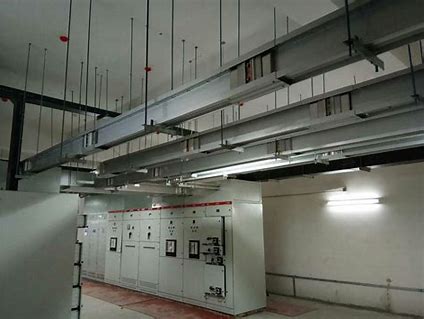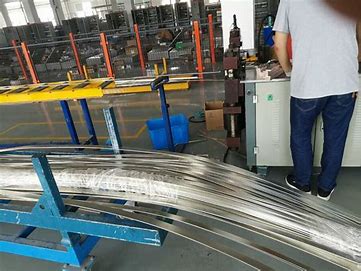Optimal monitoring with unique fire alarm (fire detection and early warning)
Temperature Monitoring of Bus Ducts and Warehouse Units
Distributed optical fiber temperature sensing technology plays a crucial role in the monitoring of bus ducts and warehouse units.

Bus duct monitoring:
Bus ducts are important components in power systems used for transmitting electrical energy. They are typically made of metal or concrete materials. During the power transmission process, bus ducts carry high electrical currents, resulting in heat generation. Excessive temperatures in bus ducts can lead to overloading, increased contact resistance, equipment aging, and even fire hazards. Therefore, real-time monitoring of the temperature changes in bus ducts can help operators detect temperature anomalies promptly and take appropriate measures to ensure the safe operation of the power system.

Warehouse unit monitoring:
Warehouse units are used for storing goods, equipment, and other items and are widely employed in the logistics and warehousing industry. In warehouse units, temperature fluctuations, humidity variations, and fire risks may exist. Particularly, for certain types of goods such as flammable and explosive materials, strict control of temperature and humidity is crucial. Therefore, real-time monitoring of the temperature and humidity in warehouse units can help prevent fires, detect temperature anomalies in advance, and take necessary measures to safeguard the safety of stored items.
Busbar Duct Solution:
Fiber Optic Installation: Deploy distributed fiber optic sensors inside the busbar duct, ensuring that the fiber optic cables come into contact with the surface or surrounding environment of the busbar duct to monitor temperature changes in real time.
Determining Installation Locations: Based on the structure and layout of the busbar duct, identify suitable locations for fiber optic installation. You can choose to lay the fiber optic cables along the length of the busbar duct or select key areas of the duct for installation.
Preparing Fiber Optic Sensors: Select distributed fiber optic sensors suitable for busbar duct monitoring. These sensors typically consist of fiber optics and temperature-sensitive materials, which are used to sense temperature changes and convert them into optical signals.
Installing Fiber Optic Sensors: Secure the fiber optic sensors inside or on the surface of the busbar duct. The specific installation method may vary depending on the material and structure of the busbar duct. For example, you can use fixtures, adhesive agents, or ties to secure the sensors in place.
Ensure Fiber Contact with the Busbar Duct: Ensure proper contact between the fiber optic sensors and the busbar duct to facilitate effective temperature transmission to the sensors. This can be achieved through appropriate fixing and contact methods such as adhesive bonding, wrapping, or hooking.
Connect Fiber Optic Sensors: Connect the fiber optic sensors to the fiber optic temperature monitoring system to transmit the collected temperature data for analysis and processing in the monitoring system.
Real-time Monitoring: Through distributed fiber optic temperature sensing technology, the temperature changes in the bus duct can be monitored in real-time. Temperature anomalies may indicate overloading, contact issues, or other faults in the bus duct.
Early Warning and Alarm: By setting predefined temperature thresholds, the monitoring system can trigger early warnings and alarms when the temperature exceeds the threshold. This timely notification alerts the operators to conduct further inspections and maintenance actions.
Data Analysis and Logging: The monitoring system can analyze and log the collected temperature data, providing valuable insights into the temperature trends of the bus duct. This information helps operators optimize operation and maintenance strategies based on historical data and trends.

Warehouse Unit Solution:
Fiber Deployment: Install distributed fiber optic sensors within the warehouse unit, ensuring that the fiber comes into contact with the warehouse space or the stored goods. This allows for real-time monitoring of temperature changes.
Determining Deployment Locations: Based on the layout and requirements of the warehouse unit, identify suitable locations for fiber deployment. Options include running the fiber along the walls or ceiling of the warehouse unit to cover the entire space.
Preparing Fiber Optic Sensors: Choose distributed fiber optic sensors suitable for monitoring the warehouse unit. These sensors typically consist of fiber optic cables and temperature-sensitive materials that convert temperature changes into optical signals.
Installing Fiber Optic Sensors: Fix the fiber optic sensors onto the walls or ceilings of the warehouse unit. The specific installation method may vary depending on the structure and materials of the warehouse unit, such as using fixtures, adhesive, or hanging methods.
Ensuring Fiber Contact with Warehouse Unit: Ensure a good contact between the fiber optic sensors and the warehouse unit to effectively transmit temperature. This can be achieved through appropriate fixing and contact methods, such as adhesive attachment, wrapping, or hanging the sensors.
Connecting Fiber Optic Sensors: Connect the fiber optic sensors to the fiber optic temperature monitoring system to transmit the collected temperature data for analysis and processing.
Real-time Monitoring: With the use of distributed fiber optic temperature sensing technology, the temperature changes in the warehouse unit can be monitored in real time. Temperature anomalies may indicate fire hazards or temperature impacts on stored items.
Alerts and Alarms: By setting predefined temperature thresholds, the monitoring system can trigger alerts and alarms when the temperature exceeds the threshold. This timely notification informs the operations personnel to take necessary measures to prevent fires and protect stored items.
Data Analysis and Logging: The monitoring system can analyze and log the collected temperature data, providing valuable insights to the operations personnel. They can gain a better understanding of the temperature trends in the warehouse unit, optimize fire prevention measures, and enhance storage conditions based on the data analysis.

Distributed fiber optic temperature sensing technology provides real-time monitoring and accurate temperature data by deploying fiber optic sensors in the busbars and warehouse units. Operations personnel can use this data for real-time monitoring and analysis, enabling them to promptly detect temperature anomalies, issue warnings, and take appropriate actions. This technology offers high precision, real-time capabilities, and remote monitoring, ensuring the safety and reliability of busbars and warehouse units.





